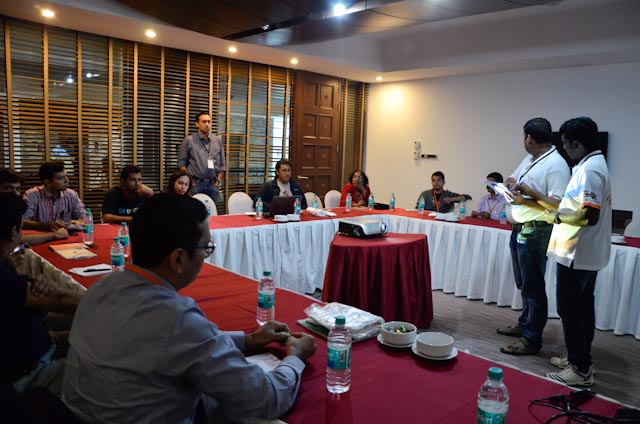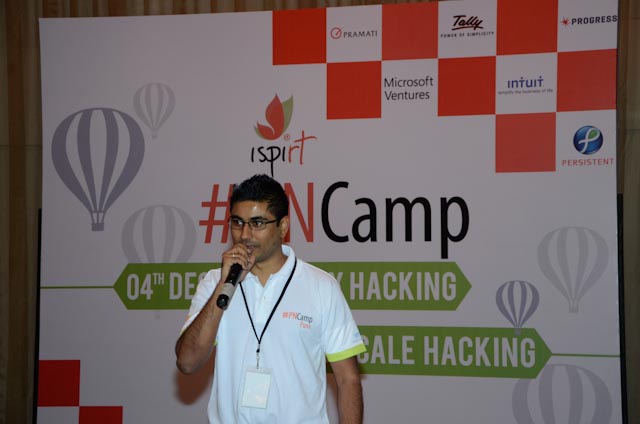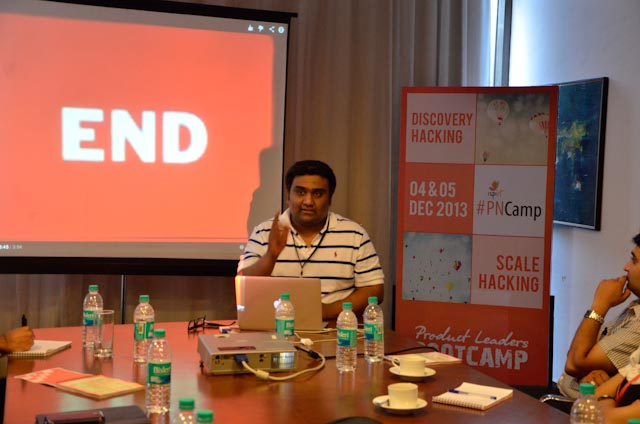The first question that I asked iSPIRT volunteers running PNCamp, the first ever bootcamp exclusively focused on product entrepreneurs in India, was why Pune? They pointed to Dilip Ittyera whose greying strands of hair masks his passion to firmly perch Pune on the product map of India. Later during many conversations, it became evident why Pune was the destination for the “product mafia” (term courtesy Pallav Nadhani) for an extended Playbook roundtable format bootcamp, the PN Camp, for a couple of days. In its subtlety, Pune hides its product quotient. There have been global success stories from this quiet city that really doesn’t hit you on your face: QuickHeal, Druva, Pubmatic and let’s hope counting.
Pallav infused energy in his intro to the camp that would make you say “let’s make it happen” with a pumped fist. The very essence of this bootcamp was to enable lifelong bonds between entrepreneurs so that they can learn from each other’s mistakes. For entrepreneurs operating with limited resources and entrapped in a lonely journey, the peer group lending a hand makes it even more exciting.
Another unique aspect of the camp was “cohorting” applicants for maximum impact. Only one out of every two applicants was accepted and then divided into cohorts matching the state in which they are in their entrepreneurial journey. The first day was for entrepreneurs just starting out to “discover” (discovery hack) the way to do it and second day was for “happy confused group” (scale hack) where the entrepreneur has figured out the product, has found a few customers and struck there, without a clue on how to take it forward.
As each cohort groups were ushered into their respective sessions, intense discussions ensued. The camp organizers had made it clear that the sessions wouldn’t be gyan but experiential discussions. A successful entrepreneur had a presentation and the questions he raised were basically discussed by the 15 to 17 entrepreneurs in each group for over three hours. The successful product entrepreneur’s success becomes a playbook for success-aspiring entrepreneurs to follow and reach heights.
Pick your battles
There are only 24 hours in a day. And it is left to the entrepreneur to choose what he or she wants to do. Picking the right battles pays you rich dividends. This is the thought behind the session ‘Picking Your Battles’ by Practo’s cofounder N.D. Shashank. Basically, Shashank’s presentation centred on four questions:
- Do you have a compelling story around your startup?
- Is your product really different?
- Why is it exciting?
- Does your product really solve a problem?
Story: If you are unable to build a compelling story around your idea and the startup, you will be less motivated to continue. So just ask yourself if the problem you are solving or your idea will keep you going for x number of years. Then build a story around the idea so that anytime you are asked why you started up, you can tell the story, which will be appealing. It’s another matter that the story will get refined over time like the events in history getting different perspectives at different points of time in future.
Differentiators: How different is your product? It would be great to create an entry barrier for a competitor to replicate your model. Here Kunal Shah of Free Charge provided an apt explanation. Create something that will become a habit for someone to use. For example, although G+ has better features than Facebook, users don’t switch because they are used to Facebook. Only when another innovation happens that changes this habit, it would be Facebook all the way. You should think of ways to appeal to the users by making a difference in the way the product serves the user that he wants to come back and use it over and over again. Sometimes customers can become your salespeople that they recommend your product to their friends and people in the network.
Excitement: Taking a cue from Practo’s experience, Shashank said that among the specialists, dentists were high in number. So dentists were first targeted for PractoRay, a Practo software used by the doctor to schedule appointments with patients and keep their medical records. This proved successful as more users felt excited to find dentists in their neighbourhood. Customers will buy if they find the product useful and not make a fuss over price.
Solving a problem: You should build features in your product that are must-have and not nice to have. Then you should ask if your customers will pay for those must-have features. Unless you are solving a real problem, customers will not pay. Usually, the problem you are solving is the problem you faced yourself. Shashank got the spark of an idea on a platform like Practo after experiencing difficulty in mailing his father’s medical records to an expert in the United States. Then he studied what ails the system and built Practo to address each one of the issues he observed such as waiting times for patients (Practo helps you schedule appointments), non-digital medical records (information can be stored using Practo’s software), storing them and sending them (possible in the Practo platform).
 Many aspects of product building, feature adding, and finding customers were discussed elaborately. Just to give one more useful example, when there is friction, it’s best to have a basic free model and then price the product for different sets of customers. Differential pricing by adding features is another
Many aspects of product building, feature adding, and finding customers were discussed elaborately. Just to give one more useful example, when there is friction, it’s best to have a basic free model and then price the product for different sets of customers. Differential pricing by adding features is another















